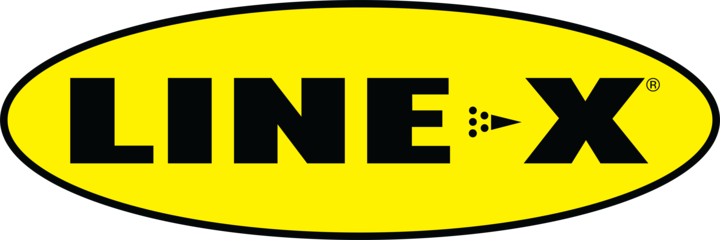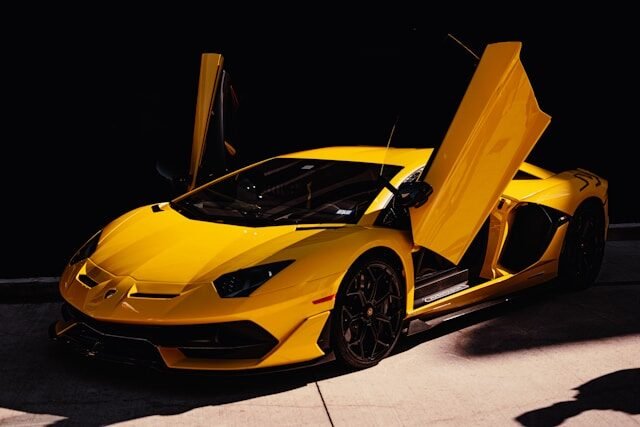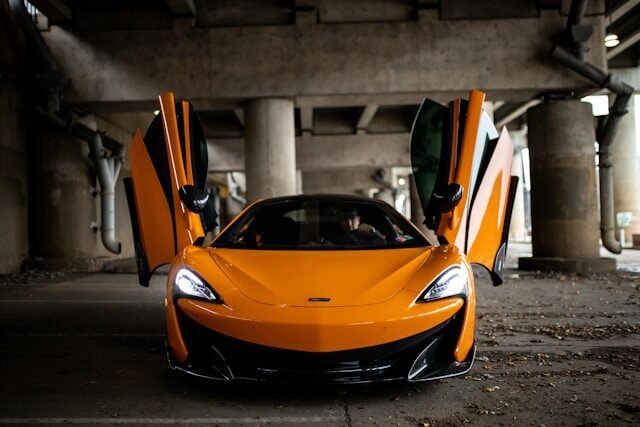If you’ve ever stepped into your vehicle on a blazing Palm Beach afternoon and felt like you opened an oven door, you know the struggle. From burning-hot seats to sweltering steering wheels, the Florida sun doesn’t take it easy. But there’s one smart fix that goes beyond just looking cool—window tint film.
At LINE-X AUTO SPA, we’re often asked by customers, “Does tint really help cool my car?” The answer? Absolutely—when it’s the right type of tint. This comprehensive guide breaks down how automotive window tinting works, why it’s more than just a cosmetic upgrade, and how choosing the correct film can keep both you and your car interior feeling fresh.
Why Heat Control Matters in Your Car
It’s easy to underestimate just how much heat builds up inside your car, especially when parked under direct sun. But this isn’t just about sweating through your commute. Excessive heat can actually damage your vehicle.
Prolonged exposure to sunlight and high temperatures leads to:
- Cracked dashboards and plastic trims
- Faded upholstery and leather seats
- Degraded electronics and infotainment systems
- Increased wear on your air conditioning system
And let’s not forget personal safety. High interior heat puts kids, pets, and even groceries at risk. That’s why investing in heat-reducing window tint isn’t just about style—it’s about protection and comfort.
The Science Behind Window Tint Film and Heat Reduction
Window tint works like a high-tech shield against the sun. It isn’t just a dark layer slapped on your windows. Today’s advanced films—especially ceramic window tint and carbon window films—are designed using multi-layered technology that targets different types of solar energy:
- Visible Light Transmission (VLT): Controls the amount of visible light that enters the cabin. Lower VLT = darker tint.
- Infrared Rejection (IR): Infrared rays carry heat. High IR rejection means better cooling.
- Ultraviolet (UV) Blockage: Prevents 99% of harmful UV rays that cause fading and skin damage.
When you apply infrared-blocking tint film, your car interior absorbs far less heat from the sun, making for a much cooler experience, without always having to opt for the darkest shade possible.
How Exactly Does Window Tint Block Heat?
Window tint reduces heat using three primary mechanisms:
- Infrared Rejection: Infrared radiation makes up the bulk of the heat from sunlight. High-performance films like ceramic window tint can block up to 98% of infrared rays, stopping heat before it enters the cabin.
- Ultraviolet Protection: UV rays not only damage your skin but also break down interior materials like leather, vinyl, and fabric. Most quality tint reject up to 99% of UV rays, keeping your cabin cooler and your skin safer.
- Visible Light Reduction: While visible light isn’t as heat-intensive as infrared, it still contributes to interior warming. By reducing the amount of visible light that enters your car, tint creates a cooler, more comfortable environment.
Together, these features make window tint a powerful tool for thermal control and comfort.
Different Types of Heat-Blocking Window Films
1. Ceramic Window Tint Film
The gold standard in modern automotive tinting, ceramic window films use nanotechnology to block heat without relying on metal. This means:
- Superior heat rejection
- 99% UV protection
- No signal interference (unlike metallic films)
- Exceptional clarity, even at night
- Durability and fade resistance
Ceramic tint is ideal for drivers who demand high performance, long-lasting protection, and maximum comfort—especially under Florida’s intense sun.
2. Carbon Window Tint Film
A great middle-ground option, carbon tint offers:
- Strong UV and heat rejection
- Matte, non-reflective appearance
- No fading or bubbling
- Cost-effective alternative to ceramic
Carbon films are perfect for drivers looking for solid protection without the higher price tag of ceramic films.
3. Dyed Window Tint Film
Dyed film is primarily cosmetic and the most affordable, but it comes with trade-offs:
- Minimal heat rejection
- Fades and bubbles over time
- Shorter lifespan
While it can improve appearance, dyed film doesn’t provide significant heat control. For Palm Beach drivers, we recommend going with carbon or ceramic for long-term results.
How Window Tint Film Keeps Your Car Cool Even When Parked
When your car is parked under direct sun, interior temperatures can climb to over 130°F within 30 minutes. That’s not just uncomfortable—it’s dangerous. Heat control window films drastically slow down this heat buildup.
- Block infrared rays before they enter your car.
- Reduces solar energy gain—the amount of heat trapped inside your vehicle.
- Protects interior materials like leather, suede, and vinyl from sun-induced wear.
Even if you’re only gone for a quick coffee run, the difference is noticeable. Many clients at LINE-X AUTO SPA report up to 30–60°F cooler cabin temperatures after installing high-performance ceramic tint.
What Is Infrared Heat and Why Should You Care?
Infrared (IR) radiation is the invisible part of sunlight responsible for making your car feel like a hotbox. It doesn’t burn like UV rays, but it transfers energy as heat.
Without IR-blocking window film, infrared rays pass through your windows, turning your interior into a greenhouse. The glass traps heat, magnifying the problem.
Choosing a film with high infrared rejection ratings ensures your vehicle’s interior stays cooler, your AC doesn’t work as hard, and you enjoy a far more comfortable driving experience.
Does Darker Tint Automatically Mean More Heat Reduction?
Not always! Here’s where many car owners get tripped up.
- Darker doesn’t equal better heat rejection.
- A 70% VLT ceramic tint can block as much heat as a 20% dyed tint, without the dark appearance.
- It all depends on the film’s material, not just the shade.
For example, Florida law restricts how dark your front windows can be. With high-performance clear or light tint films, you can stay legal while still achieving strong solar heat control.
The Role of UV Protection in Keeping Your Car Cool
While UV rays aren’t the primary cause of heat, they’re incredibly damaging to both you and your vehicle’s interior. High-quality tint offer 99% UV protection, shielding:
- Leather and fabric seats from fading and cracking
- Dashboards and door panels from sun damage
- Your skin from prolonged sun exposure while driving
LINE-X AUTO SPA installs tint that meet the Skin Cancer Foundation’s guidelines for effective UV protection, making it a smart health investment as well as an aesthetic one.
Energy Savings: How Window Tint Reduces AC Use
Running your air conditioner non-stop puts stress on your car’s systems and burns through gas. But with heat-reducing tint:
- Your interior starts out cooler, reducing the need for max AC.
- AC cycles become shorter and more efficient.
- Over time, this leads to fuel savings and less maintenance on your AC components.
Especially during Palm Beach summers, this translates into real money saved at the pump and a more eco-friendly vehicle.
How Window Tint Films Are Tested for Heat Reduction
Professional-grade automotive window films undergo standardized tests to prove their effectiveness, including:
- Total Solar Energy Rejected (TSER): Measures how much total heat energy the film blocks.
- Infrared Rejection (IR%): Specifies how well it blocks IR radiation.
- Ultraviolet Rejection (UV%): Focuses on UV ray protection.
At LINE-X AUTO SPA, we exclusively carry tint with certified TSER and IR rejection data. We’ll show you the numbers before you commit.
Choosing the Right Tint Shade for Heat Reduction
Different tint serve different needs:
- 70% VLT Ceramic Tint: For windshield tinting and those wanting nearly invisible protection.
- 35% VLT Carbon or Ceramic Tint: Great all-around balance of heat control, privacy, and legal compliance.
- 20% VLT or Lower: Ideal for rear windows where privacy and maximum cooling are priorities.
We help Palm Beach clients customize tint solutions based on both legal limits and personal style preferences.
Window Tint Myths: Heat Reduction Edition
Let’s bust a few common misconceptions:
- Myth 1: Darker tint equals better cooling.
→ Not true. Film composition is what really counts. - Myth 2: All window films block the same amount of heat.
→ High-performance ceramic films far outperform basic dyed options. - Myth 3: Tinting your car doesn’t make that big of a difference.
→ Actual results show interior temperature reductions of up to 60°F.
How LINE-X AUTO SPA Installs Heat-Reducing Window Tint
We follow a professional process to guarantee flawless results:
- Consultation: We discuss your needs, tint preferences, and Florida law requirements.
- Film Selection: Choose from ceramic, carbon, or dyed films with certified ratings.
- Precision Installation: Using computer-cut templates for a perfect fit—no rough edges or bubbles.
- Final Inspection & Care Tips: We show you how to maintain your tint for long-term performance.
Our team stands behind every job with top-quality service and attention to detail.
How Long Does Heat-Reducing Window Tint Last?
When installed professionally, premium window films can last:
- 7–10 years or more for ceramic and carbon tint.
- 2–5 years for lower-end dyed films.
Factors like climate exposure and cleaning habits play a role. That’s why LINE-X AUTO SPA offers lifetime warranty options on our premium tint.
Is Heat-Reducing Window Tint Legal in Florida?
Florida has strict laws about how dark your windows can be. Here’s the breakdown:
- Sedans:
- Front Side: 28% VLT minimum
- Back Side/Rear: 15% VLT minimum
- SUVs/Trucks:
- Front Side: 28% VLT minimum
- Back Side/Rear: Any shade allowed
We’ll make sure your tint job meets both your heat-control goals and local regulations.
Why Choose LINE-X AUTO SPA for Heat-Blocking Window Tint
Here’s what sets us apart:
-
- Certified Experts: We’ve tinted thousands of cars—no rookies here.
- Premium XPEL Films: The best in the business for heat rejection and clarity.
- Legal Guidance: We keep you compliant with all Florida window tint laws.
- Custom Shade Options: From clear to limo-dark, we’ve got it all.
- Warranty-Backed: Many films come with lifetime warranties against fading, peeling, and bubbling.
We’re not just a tint shop—we’re Palm Beach’s go-to for performance window tinting.
Final Thoughts: Stay Cool with Professional Window Tint
When it comes to keeping your car cool under Florida’s relentless sun, window tint film isn’t a luxury—it’s a necessity. Choosing the right film type, shade, and installer makes all the difference.
At LINE-X AUTO SPA, we help customers get the perfect balance of performance, style, and legal compliance while maximizing interior comfort and long-term protection.
Ready to ditch the oven-on-wheels experience? Get in touch with our team today and experience cooler rides with premium window tint film.
FAQs About Heat-Reducing Window Tint Film
Does clear window film reduce heat as effectively as dark tint?
Yes, high-quality ceramic tint with high VLT (like 70%) can block significant heat while staying nearly invisible.
Can window tint film damage my car windows?
Not when installed properly. Professional window film installation poses no risk to your glass when applied by experts like us.
What’s the difference between carbon and ceramic window tint?
Both block heat, but ceramic tint provides higher infrared rejection, longer durability, and better clarity.
Is window tint worth it for older vehicles?
Absolutely! Older cars benefit from UV protection and interior heat reduction, extending their lifespan.
How soon can I wash my car after tinting the windows?
Wait at least 7 days before cleaning the windows to allow the film to fully cure.










